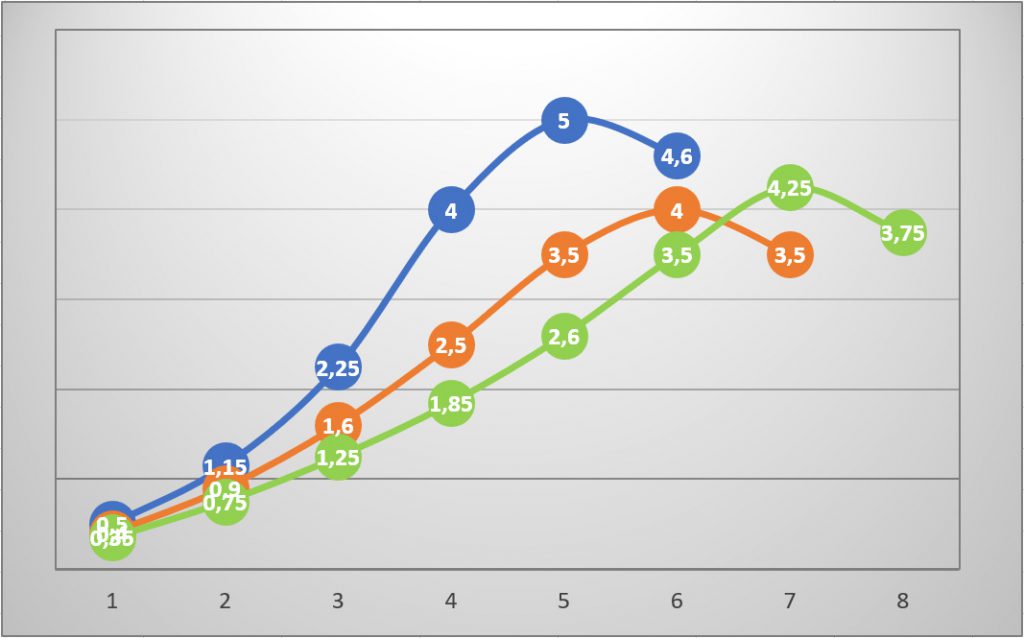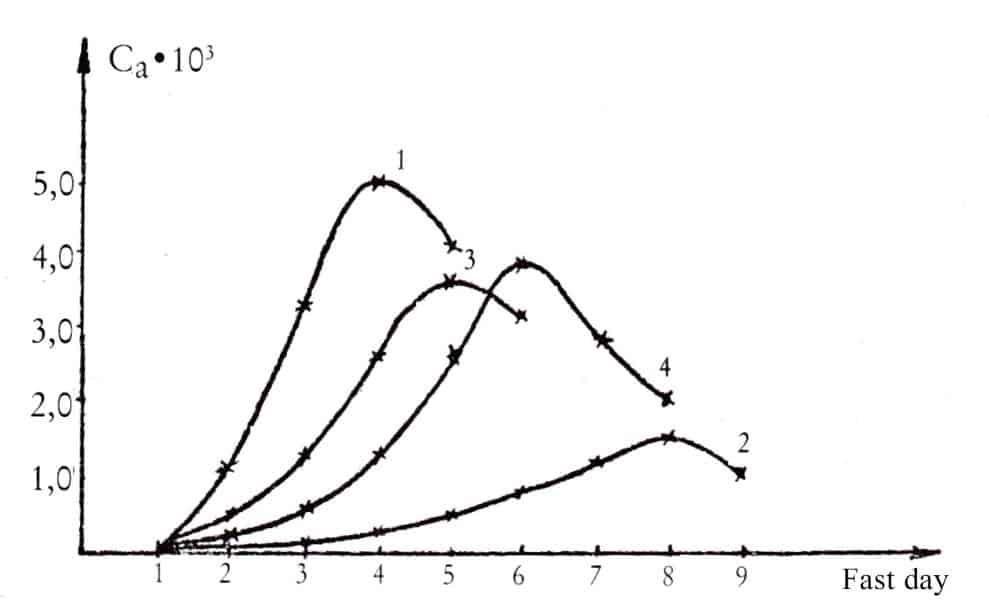On the Acidotic Crisis and Duration of Water Fasting

The first 5-8 days of prolonged water fasting are the most difficult. The hunger sensation disappears quickly (in the first 2-3 days), but weakness, nausea, and headache often appear later on. These sensations subsequently pass, and fasting becomes comfortable. Why do unpleasant sensations go away and why is it important to wait for this moment without breaking the fast?
In the initialdays of fasting, the body uses up its carbohydrate reserves,particularly, liver glycogen, a process thatis accompanied by rapid weight loss. After using up most of the carbohydrate reserves, the intensity of weight loss decreases significantly, and the body begins to use up the fat. As you know, fat oxidation with an insufficient amount of carbohydrates is difficult. Undersuch conditions, when fat reserves arebeing consumed, products of its incomplete combustion,the so-called ketone bodies –acetone, acetoacetic and beta-hydroxybutyric acid–are formed, which contributes to the onset of acidosis, i.e. acidification of the blood.
Due to a number of protective bodily mechanisms (in particular, the use of ammonia, formed as a result of protein breakdown, the presence of bicarbonate and other buffer systems in the blood), the acid-alkalinebloodbalance changes relatively little during fasting, i.e. such acidosis is always compensatedin humans. Therefore, the possibility of an acidotic coma (as, for example, in diabetes mellitus) is excludedduring therapeutic water-only fasting.
Nevertheless, in spite of all the compensatory mechanisms, acidosis increases during complete fasting in humans, usually reaching the maximum on the fifth or ninth day of fasting. This period is characterized by a significant drop in bloodalkaline reserves, an increase in ketone body contentin urine and blood, adecrease in blood sugar, and an increase in blood acidity. During the period of increasing acidosis, the patient may feel unwell, headache, nausea, depressed mood, various unpleasant sensations in the body and the smell of acetone from the mouth.
If fasting continues, there is a turning point that occurs within one day or even several hours: the indicators of acidosis drop sharply, as reflected in clinical and laboratory test results. In particular, acetone concentration in the expired breath condensate decreases (see Fig.).

